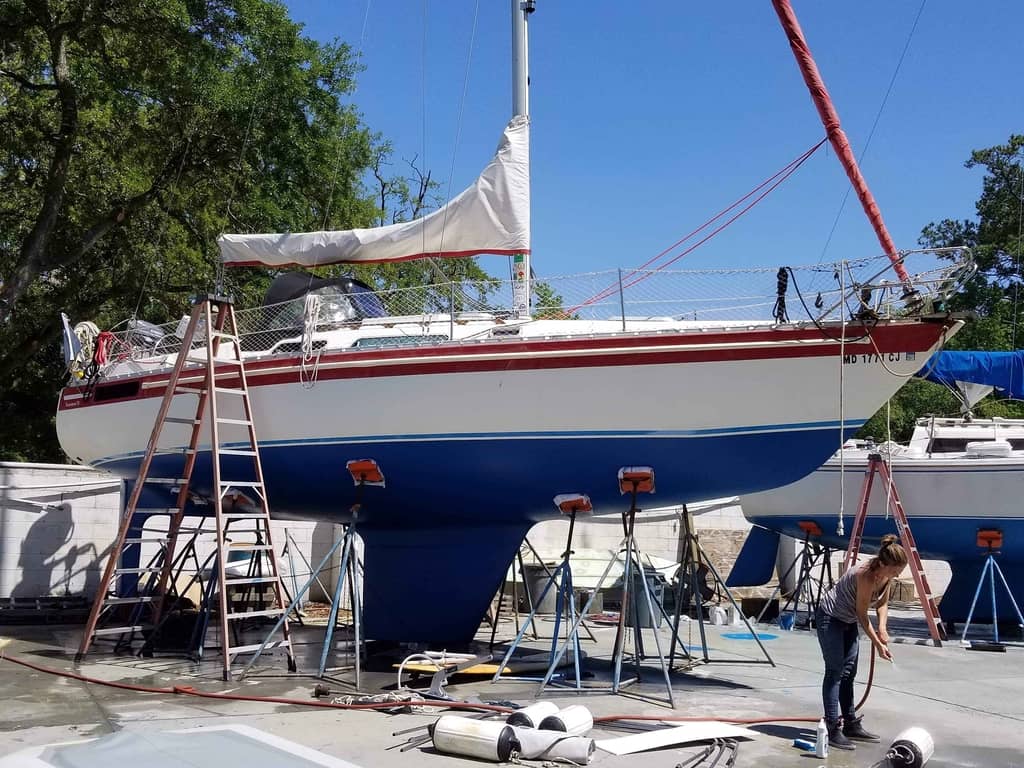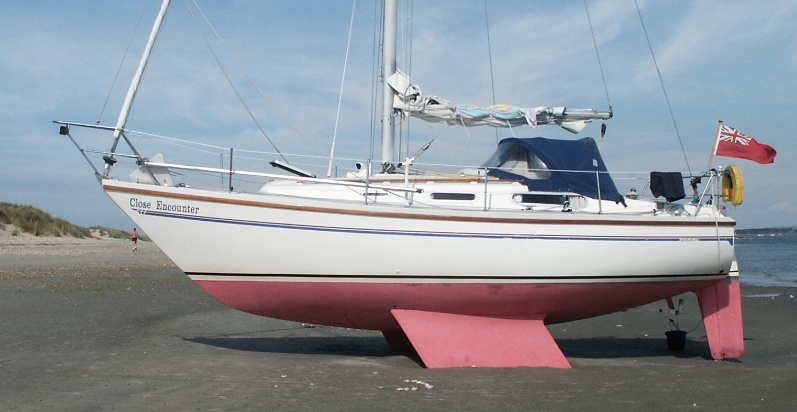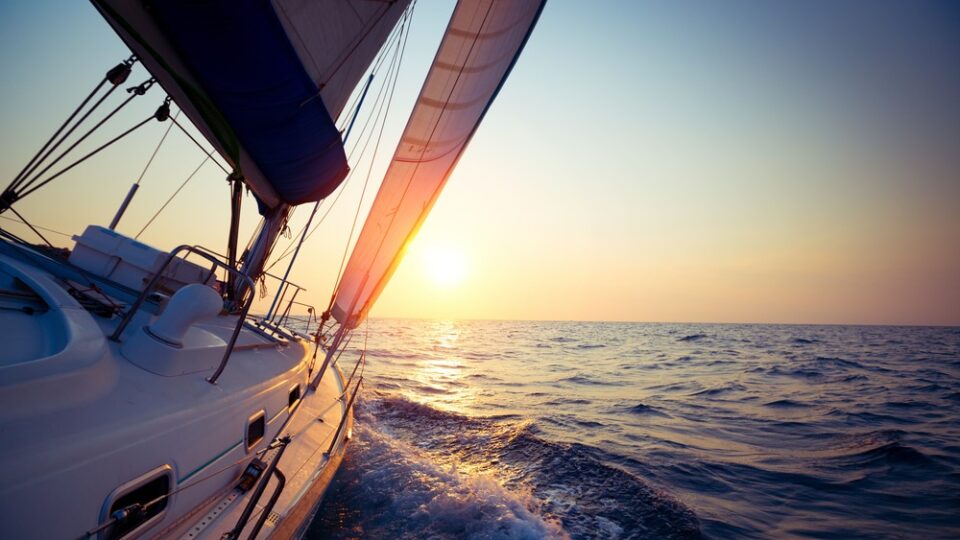Bilge Keel Vs Fin Keel: Which is Better?
Keel design is constantly changing, and nowhere is this more evident than in current racing yachts. To stay upright when sailing upwind, these speedy offshore monohulls feature very sophisticated canting keels. The boats are made to be as light as possible while remaining strong enough to compete in ocean races. While cruising yachts aren’t built to compete in ocean races, there are a variety of keel designs to choose from. Traditional boats have long, deep keels that are an inherent component of the hull, making them heavier than modern designs but also more stable and seaworthy. Fin-shaped keels, which are bolted beneath the hull, are found on many modern boats. This results in yachts that are lighter, faster, and more maneuverable than deep keel designs. In this article, I will compare the bilge keel vs the fin keel types. So, if you’re interested to learn more, then keep reading!
Fin Keel
So, what do we mean by fin keel? This is the boat’s major structural component. It is also known as the vessel’s backbone, as it runs longitudinally across the hull from bottom to top. The keel is built of robust material and runs from the stem to the stern to ensure the boat’s stability. It is usually made of metal or wood. A fin keel is a long, weighted blade that is affixed to the hull’s bottom. It is more agile, lighter, and faster than a full keel, but it is also more vulnerable. A lever is created by the increased distance between ballast and sails, which eliminates the need for a big wetted surface or additional ballast. Popular sailboats with a fin keel include the Hunter 34, the Bavaria 40, and the Catalina 30.
Fin keels are bolted to the hull and are deeper and thinner than full keels. They’re also less heavy. This significantly improves performance, making fin keels much faster in all scenarios. Fin keels, on the other hand, have a number of significant drawbacks. Fin keels are less comfortable than full keels because they allow for more heel and a less stable track. Thus, this results in less directional stability. Fin keels are also much more vulnerable than full keels, which means that when they run aground, they can break off or be damaged. Keep in mind that fin keels are greatly used by racers because they maneuver better in tight spots.
There’s another distinction on fin keels; fin keels with skeg rudder and fin keels with spade rudder. A small structural element in front of the skeg rudder protects fin keels with skeg rudders. This design is largely integrated into the hull, making it less vulnerable and providing a wonderful balance of speed and safety.
The rudder on fin keels with a spade rudder is entirely exposed, and the fin is normally bolted on. Because the keel isn’t integrated into the hull, it’s more susceptible to damage and uncomfortable.

Pros and Cons of Fin Keels
A fin keel with a spade rudder is a common option nowadays. It is usually combined with light but beamy hulls with a high freeboard. Excellent speed, high pointing, and quick tacking are all benefits of a low wetted surface and a good aerofoil design. Steering is also lighter. Also, the best designs of a fin keel with a spade rudder are capable of cutting through strong seas with moderate comfort. Note that when sailing downwind, a fin keel with a spade rudder is fast, quick to surf, and might even be able to plane.
The disadvantages of a fin keel with a spade rudder are that it requires earlier reefing and it is less steady on the helm. Another disadvantage that applies when sailing downwind is that it can broach suddenly and easily and hard to control in rough conditions. Also, slamming can be caused by flat sections and in rough weather lightweight designs can be uncomfortable. They also have a strong tendency to round up when hard pressed. Moreover, when sailing downwind, this type of keel can be unstable and hard to control in rough weather conditions.
A fin keel with a skeg rudder has some minor differences to the latter type. Note that the skeg running aft protects the rudder and facilitates tracking both under sail and power. Generally, a fin keel with a skeg rudder offers better support for the rudder. There’s also less chance of damage than with a fin keel with a spade rudder. On the contrary, there’s a more wetted surface thus it makes it slower. Also, as a result of limited balancing, this can make the helm heavier.
But, what are the benefits of a well-designed single keelboat over a double keel model, then? Because it is difficult to create a twin keelboat with a truly deep draught, a moderate draught twin keel vessel may outperform a sister boat with a single keel of the same draught, the deep keel variant will always be faster. Furthermore, compared to a twin keel model, a boat with a deep single keel will have less wetted surface area and hence less drag. This is especially important in light weather when the twin keel is at a disadvantage.
Fin Keels Properties
The keel was once employed to keep the ribs together as well as to keep the stem and sternpost in place. As you may know, there are several types of keel. The most common ones include the full keel or ballast keel which is used for stability and lateral resistance. Also, the drop of sliding keel is used to prevent the boat from side slipping. In addition, the bilge keel is a common shoal-draught option and the fin keel is generally faster and lighter.
So, the fin keel is a narrow plate in the middle of the ship, situated to the keel of a boat. It is made of wood or metal and extends downwards. A fin keel’s main purpose is to produce lateral resistance and make the boat more stable. Moreover, when a boat has a fin keel, it is easier to steer. This keel is usually nearly half the length of the boat’s bottom, and it aids in reducing drag and creating less leeway. As a result, the boat may travel quicker while remaining more stable in relation to its weight.
Note that fin keels are even more efficient when paired with current sail design and materials. The fin keel is now a separate rudder, such as a skeg hung or spade, and it is the most prevalent type of keel. As aforementioned, fin keels have various drawbacks, such as poorer directional stability, for some. They’re also more difficult to design and support when it comes to hard grounding. An excellent component to compare boats on is the fin keel. When looking at boats and their characteristics on boat comparison databases you can find more information about a specific type. For instance, details about the size, material, and stability of the fin keel used on various boat models.
>>Also Read: Sailboat Keel Types
Bilge Keel
Bilge keels are planes or fins that fit externally at the bilge’s turn. Their length is normally around a third of the ship’s length. Sometimes they might be larger, but seldom surpass half of the ship’s length. Depending on the size and fullness, their depth ranges from 1 to 2 feet. If they are too shallow, their performance will be limited. Yet, if they are too deep, damage may occur while berthing alongside, drydocking, or running aground.
A bilge keel is basically a double keel with double fins that allow the boat to be beached and stand upright on its keel. Bilge keels provide twice the wetted surface, increasing comfort, and directional stability while lowering heel height. Due to improved design, modern bilge keels frequently give an adequate windward performance. When contrasted to the fin keel, the bilge keel sacrifices speed but does not necessarily give a lower overall performance. Examples of common sailboats with a bilge keel include Dufour Dynamique 62, Patagonia Patago 39, and Hunter Duette.
Bilge keels are the most common passive system, and they are installed on the vast majority of boats. They are basically plates that protrude from the bilge turn and span the middle half to two-thirds of the boat’s length. In general, they do not protrude beyond the boat’s side or keel lines so as to minimize damage. But, they must reach the boundary layer around the hull to be functional. In addition, they induce turbulence by producing a body of water to flow with the boat, dampening the motion and generating an increase in period and drop in amplitude.
Bilge keels are surprisingly common on many boats, both private and commercial because motorboats often lack stability, and this is an elegant, simple, and strong solution. The fins aren’t very wide, and they don’t protrude very far outwardly, so it’s a simple design to build and utilize. On sailboats, though, things are a little different. Because the bilge keel’s purpose is not only that of a stabilizing device, but also that of a keel, they tend to be longer, resulting in the appearance of legs of sorts.
The primary function of a bilge keel on most ships is to help dampen the rolling motion of the vessel. Other minor benefits of the bilge keel include bilge protection during grounding and greater longitudinal strength at the bilge. The bilge keel’s dampening function is tiny but effective, and it comes at no expense after boat construction. It is carefully positioned on the ship to avoid excessive drag when underway. Moreover, alternative positions of the bilge keel may be tried on the model so as to anticipate power requirements in order to obtain a minimum drag.

Pros and Cons of Bilge Keels
Bilge keels have a number of distinct benefits over full and fin keels. The fact that the boat can be beached is the most essential feature, making it a popular design in tidal areas. The use of bilge keels is particularly popular along the British coast, where fishermen keep their boats in tidal ports. Another significant benefit is that the boat may be stored on its keels, which makes dry storage and maintenance much easier.
Bilge keels are more effective for high angles of roll than for small angles of roll. Also, the reduction in rolling motion is larger for a boat moving forward than for a stationary boat. The roll energy of the ship is passed to the water particles in the region of the ship’s hull, making them passive stabilizers. Keep in mind that the installation of bilge keels is not suitable for all ships. An icebreaker, for example, requires clean hull contours so that boat will be able to steer onto the ice and collapse it.
The bilge keels have huge levers around the rolling axis, and the forces on them provide a large moment opposing the rolling, despite their size. They have the ability to reduce roll amplitude by more than a third. Their impact is often amplified by forwarding speed. Note that in still water, they are aligned with the flow of water past the hull in order to reduce drag. When the ship is rolling, the drag increases, causing the ship to slow down slightly.
Bear in mind that a sailboat with bilge keels can stand upright on flat terrain due to their length and the fact that they extend beyond the lowest point of the hull. The advantage is undeniable in this case. The ability of a boat to stand upright while aground greatly expands your options. If you prefer to spend the night on the shore, your boat can stand flat. Many keelless boats, or those with retractable keels, take advantage of this feature as well. It’s also something that makes life a lot easier for sailors, especially in low-tide locations.
So, the major advantages of bilge keels include a shallow draught and great protection when grounding. In addition, a bilge keel can dry out on a flat bottom and some designs are also able to perform better windward than long keels; similar to fin keels. On the other hand, the disadvantages of bilge keels include less speed and pointing when sailing windward. Also, when the boat is well-heeled it is possible that waves might slap under the windward keel. Lastly, it can topple over in case one keel encounters a soft ground or a hole.
Bilge Keel Properties
Keep in mind that bilge keels are a broad term that encompasses a wide range of design modifications. Bilge keels are, strictly speaking, additional to a long central keel installed near the bilge. In this case, the hull turns from the bottom to the side of the boat. These were traditionally non-structural, shallow, and lengthy, with the goal of reducing rolling. Twin keels, on the other hand, completely replace the central keel and are structurally modified to make them the principal ballast-bearing hull appendages.
There were some early twin keel designs that simply placed two shallow-draught keels on either side of the centreline. Meaning that they were situated at right angles to the waterline and parallel to the centreline. However, these boats used to sag to leeward when sailing upwind and lacked sufficient hull reinforcing at the attachment spots. So, modern keels were developed and they are now more hydrodynamically aligned. In addition, some say that they give at least as much lateral resistance as a single keel, but with more drag in theory.
Because of the additional reinforcement needed to handle loads of the ballast and drying out, a boat with two keels will be heavier. Subsequently, it will have a higher center of gravity due to the reduced draught. Modern construction, narrow-chord keels, and ballast bulbs, among other things, help to mitigate these issues.
Bilge keelboats are usually regarded to provide the advantages of short draught and the ability to dry out upright in low water at the sacrifice of performance. However, that is not the full picture. In other words, a well-designed twin-keel boat may perform better on average than some single-keel boats. It must be stated, however, that many of the early bilge keel designs were ineffective. These had very shallow keels with little to no aerofoil shaping and were attached to the boat vertically. It’s no surprise that these boats didn’t sail well, especially windward, despite having high directional stability, which has long been a desirable feature in cruising boats.
>>Also Read: Full Keel Vs Fin Keel On Sailboats
Bilge Keel VS Fin Keel – The Bottom Line
The comparison between bilge and fin keels can be a contentious subject. While it may appear that fin keels are preferred by the majority of new boat buyers, there is a sizable undercurrent of sailors who prefer boats that can take the ground. While fin keels theoretically give a deeper center of gravity, marginally less drag, and greater lateral resistance, making them better at sailing to windward, they are a recent development, and it wasn’t long ago that all sailboats were long-keeled and could dry out on legs or alongside a harbor wall. If you want a stable boat and the ability to beach your boat and don’t really care about performance then go for a bilge keel. If you opt for speed and agility go for a fin keel boat but note that these tend to be more vulnerable to damage.
I hope that this article will help you make the right decision. Good luck with your research!
